
Overall the population at highest risk of developing Alzheimer’s disease is people advancing in years and those with insulin resistance.1,2,3,4,5
Because of statistical differences between study groups as well as glucose markers across various regions of the brain, researchers have developed a database registering brain ketone and glucose uptake of cognitively normal young individuals and those of advancing years. The age advanced group had a minimum age of 65 and were devoid of cognitive impairment. The elder group was determined to be cognitively normal with a profile that could be closely matched to younger adults.6
Each participant underwent brain glucose uptake and had their brain assessed, both as a whole and regionally. The older group had a 9 percent lower brain glucose uptake compared to younger subjects, which was mainly in the frontal cortex. In cases of Alzheimer’s, this was significantly different wherein patients with Alzheimer’s have glucose deficit in their frontal cortex but as high as 33 percent lower glucose uptake in the temporal and parietal cortex, among other brain areas.7
In conclusion, it was determined that lower glucose uptake in the frontal cortex of the brain is normally present in our healthy, age advanced population regardless of the lack of clinical markers of Alzheimer’s disease. In other words, younger adults in this study group (<40 years of age) who were yet to show signs of dementia, had lower glucose uptake, as did those of >65 years of age despite cognitive scores.
Brain Fuel Deficit
Therefore, the brain fuel deficit at the heart of Alzheimer’s centers on glucose rather than ketones, precedes symptoms associated with Alzheimer’s disease, and becomes more pronounced as mild cognitive impairment progresses to the Alzheimer’s stage.
In addition, as a result of studying young women with mild insulin resistance, it is now evident that insulin resistance is associated with impaired glucose absorption and metabolism. What has also been established is the development of deteriorating brain glucose in older citizens, taking place as early as the second and third decade of life. 8, 9
Regardless of age, brain glucose hypo-metabolism (whether due to age or insulin resistance) is a risk factor of Alzheimer’s disease. Neuronal function will continue to deteriorate as a result of glucose deficit, which in turn worsens impaired cognitive function. Additionally, ketone metabolism decreases in the presence of chronic hyper-insulinemia and insulin resistance, the net effect being brain exhaustion due to the brain not getting enough glucose and less ketones. 10,11,12
Ketones are Essential for Brain Development and Maintenance
Ketones are the brain’s back-up fuel, and not just during times of aging and insulin resistance. If the body has been thrown into starvation mode due to malnutrition or an extremely low caloric diet, ketones become the body’s only energy option. All other organs in the body, with the exception of the brain, can call upon free fatty acids to replace declining glucose levels—they do not need to rely on ketones. In this way, ketones are reserved solely for use by the brain, as necessary.13,14
Ketogenesis
Ketogenesis describes the production of ketone bodies during the metabolism of fats. For the duration of a low glucose supply, long chain fatty acids (stored in adipose tissue) will be released as free fatty acids. These fats are the main substrate for ketogenesis whereupon the body signals their release in the presence of hypo-insulinemia.15 When liver glycogen stores become depleted or when the liver is metabolizing medium-chain triglycerides, ketone bodies will then be formed by ketogenesis. There are several metabolic steps involved in these processes that are very detailed, so we’ll instead look at the results of short and long-term fasting involving ketogenesis.
A short-term fast of 1–2 days generally matches ketone metabolism to ketone synthesis, whereby ketone levels do not rise much above <0.3mM.16,17 However, after 3–5 days of fasting, ketogenesis is significantly increased, causing plasma ketones to increase ten-fold.38
Ketones and Low Caloric Intake
A main concern of patients suffering with dementia and Alzheimer’s is the stage when they start eating far less, eventually refusing to eat even when being assisted. Classic studies reveal that ketones become the main energy supply for the adult brain when long-term starvation occurs. For example, even though the liver has high energy demands, it cannot catabolize ketones. While the whole body is in need of nourishment during starvation, skeletal muscle can increase its uptake of fatty acids to allow ketones to become ever more available since the brain has no alternate energy substrate to replace glucose with.18,19 The liver can produce up to 150 g ketones per day.20,21
Ketone and Glucose Response
There is a push/pull mechanism triggered by ketone and glucose levels. Under normal conditions (excluding insulin resistance), during neuronal activation glucose is extracted from the blood and deposited into the brain upon metabolic demand. In instances of hyperketonemia (elevated levels of ketone bodies in the blood) certain metabolic transporters are triggered, causing a rapid brain response.22
When there are above-normal levels of ketones circulating in the plasma (hyperketonemia), transporters are used to push ketones into the brain, a process which is regulated by plasma ketone concentration. In contrast, glucose is pulled into the brain in direct proportion to neurological demand.
Are Ketones the Brain’s Preferred Food?
Studies, including PET (positron emission tomography) and arterio-venous difference trials, have revealed that brain glucose consumption decreases in the presence of elevated levels of ketones.23
The study group reached the conclusion that the brain’s preferred food is ketones. They observed the ketones entering the brain in relation to their plasma concentration regardless of glucose concentration. In other words, even when glucose was available, absorption decreases in the presence of ketones. Overall, glucose is the brain’s dominant fuel—but not necessarily the brain’s preferred one.
Full step-by-step Dementia and Alzheimer’s disease protocols can be found in my recent book Reverse Alzheimer’s Disease Naturally.
References
1. Ronnemaa E., Zethelius B., Sundelof J., Sundstrom J., Degerman-Gunnarsson M., Berne C., et al. (2008). Impaired insulin secretion increases the risk of Alzheimer disease. Neurology 71 1065–1071. 10.1212/01.wnl.0000310646.32212.3a. https://www.ncbi.nlm.nih.gov/pubmed/18401020
2. Craft S. (2009). The role of metabolic disorders in Alzheimer disease and vascular dementia: two roads converged. Arch. Neurol. 66 300–305. 10.1001/archneurol.2009.27. https://www.ncbi.nlm.nih.gov/pubmed/19273747
3. Matsuzaki T., Sasaki K., Tanizaki Y., Hata J., Fujimi K., Matsui Y., et al. (2010). Insulin resistance is associated with the pathology of Alzheimer disease: the Hisayama study. Neurology 75 764–770. 10.1212/WNL.0b013e3181eee25f. https://www.ncbi.nlm.nih.gov/pubmed/20739649
4. Schrijvers E. M., Witteman J. C., Sijbrands E. J., Hofman A., Koudstaal P. J., Breteler M. M. (2010). Insulin metabolism and the risk of Alzheimer disease: the Rotterdam study. Neurology 75 1982–1987. 10.1212/WNL.0b013e3181ffe4f6. https://www.ncbi.nlm.nih.gov/pmc/articles/PMC3014236/
5. Baker L. D., Cross D. J., Minoshima S., Belongia D., Watson G. S., Craft S. (2011). Insulin resistance and Alzheimer-like reductions in regional cerebral glucose metabolism for cognitively normal adults with prediabetes or early type 2 diabetes. Arch. Neurol. 68 51–57. 10.1001/archneurol.2010.225. https://www.ncbi.nlm.nih.gov/pubmed/20837822
6. Nugent S., Castellano C. A., Goffaux P., Whittingstall K., Lepage M., Paquet N., et al. (2014a). Glucose hypometabolism is highly localized but lower cortical thickness and brain atrophy are widespread in cognitively normal older adults. Am. J. Physiol. Endocrinol. Metab. 306 E1315–E1321. 10.1152/ajpendo.00067.2014. http://www.physiology.org/doi/abs/10.1152/ajpendo.00067.2014
7. Castellano C. A., Nugent S., Paquet N., Tremblay S., Bocti C., Lacombe G., et al. (2015b). Lower brain 18F-Fluorodeoxyglucose uptake but normal 11C-Acetoacetate metabolism in mild Alzheimer’s Disease dementia. J. Alzheimer’s Dis. 43 1343–1353. 10.3233/JAD-141074. https://www.ncbi.nlm.nih.gov/pubmed/25147107
8. Burns C. M., Chen K., Kaszniak A. W., Lee W., Alexander G. E., Bandy D., et al. (2013). Higher serum glucose levels are associated with cerebral hypometabolism in Alzheimer regions. Neurology 80 1557–1564. 10.1212/WNL.0b013e31828f17de. https://www.ncbi.nlm.nih.gov/pubmed/23535495
9. Ishibashi K., Onishi A., Fujiwara Y., Ishiwata K., Ishii K. (2015). Relationship between Alzheimer disease-like pattern of 18F-FDG and fasting plasma glucose levels in cognitively normal volunteers. J. Nucl. Med. 56 229–233. 10.2967/jnumed.114.150045.https://www.ncbi.nlm.nih.gov/pubmed/25572094
10. Fukao T., Lopaschuk G. D., Mitchell G. A. (2004). Pathways and control of ketone body metabolism: on the fringe of lipid biochemistry. Prostaglandins Leukot Essent Fatty Acids 70 243–251. 10.1016/j.plefa.2003.11.001. https://www.ncbi.nlm.nih.gov/pubmed/14769483
11. Bickerton A. S., Roberts R., Fielding B. A., Tornqvist H., Blaak E. E., Wagenmakers A. J., et al. (2008). Adipose tissue fatty acid metabolism in insulin-resistant men. Diabetologia 51 1466–1474. 10.1007/s00125-008-1040-x. https://www.ncbi.nlm.nih.gov/pubmed/18504545
12. Cunnane S., Nugent S., Roy M., Courchesne-Loyer A., Croteau E., Tremblay S., et al. (2011). Brain fuel metabolism, aging, and Alzheimer’s disease. Nutrition 27 3–20. 10.1016/j.nut.2010.07.021. https://www.ncbi.nlm.nih.gov/pubmed/21035308
13. Cunnane S., Nugent S., Roy M., Courchesne-Loyer A., Croteau E., Tremblay S., et al. (2011). Brain fuel metabolism, aging, and Alzheimer’s disease. Nutrition 27 3–20. 10.1016/j.nut.2010.07.021. https://www.ncbi.nlm.nih.gov/pubmed/21035308
14. Cunnane S. C., Courchesne-Loyer A., St-Pierre V., Vandenberghe C., Pierotti T., Fortier M., et al. (2016). Can ketones compensate for deteriorating brain glucose uptake during aging? Implications for the risk and treatment of Alzheimer’s disease. Ann. N. Y. Acad. Sci. 1367 12–20. 10.1111/nyas.12999. https://www.ncbi.nlm.nih.gov/pubmed/26766547
15. Mitchell G. A., Kassovska-Bratinova S., Boukaftane Y., Robert M. F., Wang S. P., Ashmarina L., et al. (1995). Medical aspects of ketone body metabolism. Clin. Invest. Med. 18 193–216. https://www.ncbi.nlm.nih.gov/pubmed/7554586
16. Hall S. E., Wastney M. E., Bolton T. M., Braaten J. T., Berman M. (1984). Ketone body kinetics in humans: the effects of insulin-dependent diabetes, obesity, and starvation. J. Lipid Res. 25 1184–1194. https://www.ncbi.nlm.nih.gov/pubmed/6440941
17. Balasse E. O., Fery F. (1989). Ketone body production and disposal: effects of fasting, diabetes, and exercise. Diabetes Metab. Rev. 5 247–270. 10.1002/dmr.5610050304. https://www.ncbi.nlm.nih.gov/pubmed/2656155
18. Owen O. E., Morgan A. P., Kemp H. G., Sullivan J. M., Herrera M. G., Cahill G. F., Jr. (1967). Brain metabolism during fasting. J. Clin. Invest. 46 1589–1595. 10.1172/JCI105650. https://www.ncbi.nlm.nih.gov/pmc/articles/PMC292907/
19. Drenick E. J., Alvarez L. C., Tamasi G. C., Brickman A. S. (1972). Resistance to symptomatic insulin reactions after fasting. J. Clin. Invest. 51 2757–2762. 10.1172/JCI107095. https://www.ncbi.nlm.nih.gov/pubmed/5056667
20. Flatt J. P. (1972). On the maximal possible rate of ketogenesis. Diabetes Metab. Res. Rev. 21 50–53. 10.2337/diab.21.1.50. https://www.ncbi.nlm.nih.gov/CBBresearch/Lu/Demo/RESTful/pmcoa.cgi/BioC_xml/PMC4937039/unicode/
21. Reichard G. A., Jr., Owen O. E., Haff A. C., Paul P., Bortz W. M. (1974). Ketone-body production and oxidation in fasting obese humans. J. Clin. Invest. 53 508–515. 10.1172/JCI107584. https://www.ncbi.nlm.nih.gov/pubmed/11344564
35. Mitchell G. A., Kassovska-Bratinova S., Boukaftane Y., Robert M. F., Wang S. P.
22. Halestrap A. P., Price N. T. (1999). The proton-linked monocarboxylate transporter (MCT) family: structure, function and regulation. Biochem. J. 343(Pt 2), 281–299. 10.1042/0264-6021:3430281. https://www.ncbi.nlm.nih.gov/pmc/articles/PMC1220552/
23. Hasselbalch S. G., Knudsen G. M., Jakobsen J., Hageman L. P., Holm S., Paulson O. B. (1995). Blood-brain barrier permeability of glucose and ketone bodies during short-term starvation in humans. Am. J. Physiol. 268(6 Pt 1), E1161–E1166. https://www.ncbi.nlm.nih.gov/pubmed/7611392
Copyright © 2022 – All Rights Reserved – Michelle Honda Ph.D.
Announcement
Look for my new forthcoming books “Reverse Depression Naturally” (Spring 2020) “Reverse Inflammation Naturally” (May 31, 2017) “Reverse Thyroid Diseases Naturally” (June 2018) “Reverse Alzheimers/Dementia Naturally” (Nov.2018) “Reverse Heart Disease Naturally” (Jan.31, 2017) and “Reverse Gut Diseases Naturally Nov. 2016
Where to Purchase:
Reverse Gut Diseases Naturally Nov. 2016
Reverse Heart Disease Naturally Jan. 2017
Reverse Inflammation Naturally May 2017
Reverse Thyroid Disease Naturally June 28/2018
Reverse Alzheimers Disease Naturally Nov. 2018
Reverse Depression Naturally Spring 2020
Hatherleigh Press Page Buy Book RGDN
Local Book Stores in US and Canada
Disclaimer
While close attention was given to the accuracy of information in this article, the author accepts neither responsibility nor liability to any person with respect to injury, damage, loss or any circumstances involving alleged causes directly or indirectly related to the information in this article. The sole purpose is to educate and broaden ones awareness. This information is not meant to replace medical advice or services provided by a health care professional.





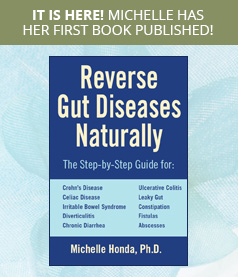

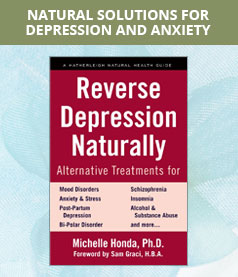
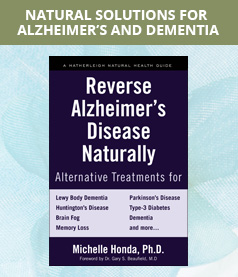
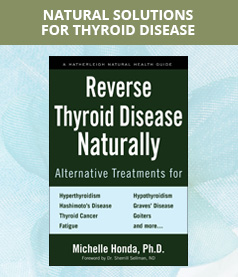


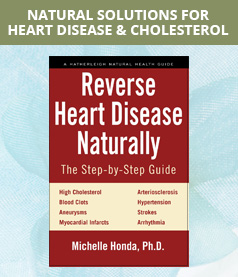
Follow Us!